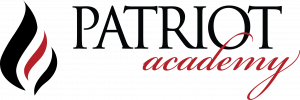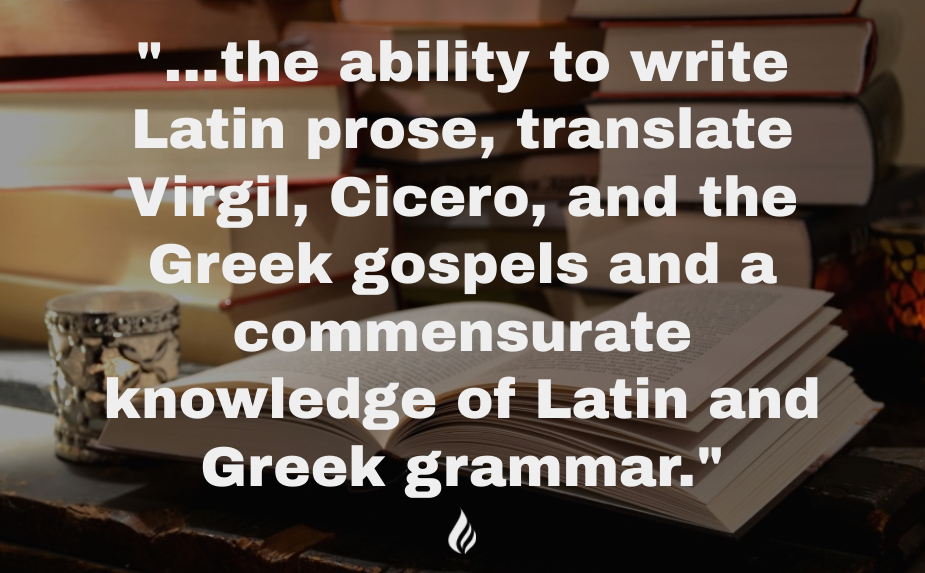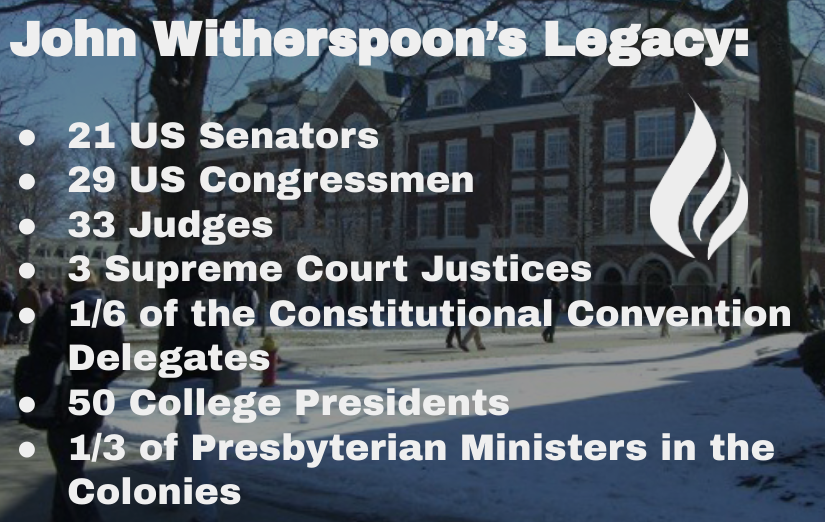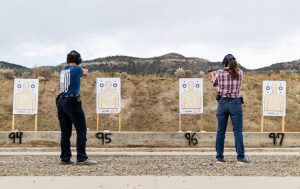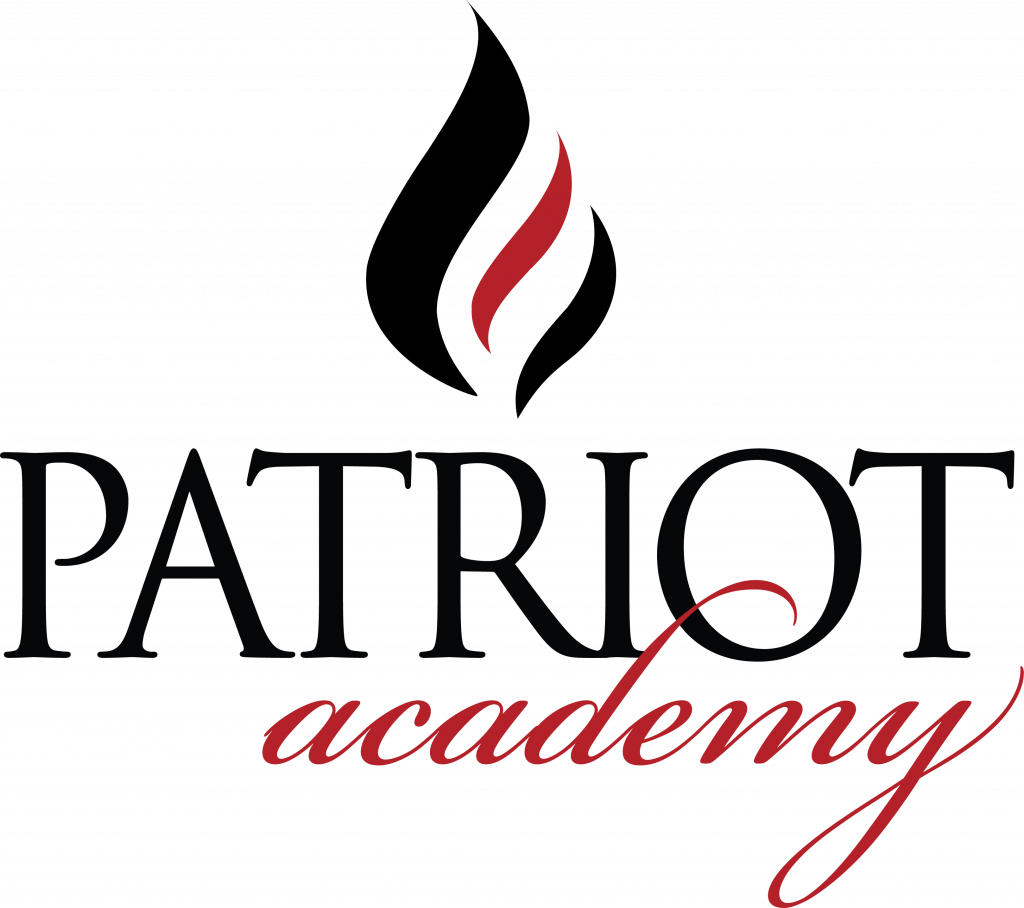Mark Cole
Beginning in 1768 and for the next quarter century, under John Witherspoon’s leadership, guidance and teaching, the College of New Jersey became a working mine of intellectual activity which would become the bricks and mortar of the American Revolution.
Witherspoon commenced his administration with a series of barnstorming trips throughout the colonies where he preached, raised money and recruited students. In his swing through Virginia, he met with a family with the last name of Madison. He persuaded them that the college might be a good fit for their eldest and intellectually gifted child.
And so, James Madison, the father of the Constitution and the fourth President of the United States was part of the class of 1771.
Later, also in Virginia, Witherspoon met George Washington and persuaded him to make a donation to the College of fifty gold guineas. Washington would eventually send his adopted son to the college, graduating in 1799.
In addition to his administrative chores and his fundraising, Witherspoon preached twice on Sunday and kept up a heavy teaching load. Since the college had only five faculty members (two professors and three tutors) when he became president, Witherspoon led by example, waded in and personally taught courses in theology, moral philosophy, rhetoric, history, French and Hebrew.
The courses that Witherspoon taught reflected the high value that he placed on academic rigor. Nothing was easy about the College of New Jersey under the leadership of John Witherspoon. Applicants to the college were obliged to demonstrate “the ability to write Latin prose, translate Virgil, Cicero, and the Greek gospels and a commensurate knowledge of Latin and Greek grammar.”
And that was just to get in. Getting out (or, at least getting out with a diploma) was much more difficult. A day in the life of a College of New Jersey student under the Witherspoon regime was brutally difficult. But it was not complicated. The students’ days consisted of praying, reading the Bible and studying:
“The rising bell rang at five and morning prayers were said at five-thirty, when a Senior usually read a chapter of the Bible from the original into English, after which the President proposed a few questions on the reading and then commented at large. Between morning chapel and breakfast, which was served at eight, came an hour’s study. Recitations began at nine and lasted until one, the dinner hour. From three until five, when the bell rang for vespers, were study hours….After vespers they were free again until seven when supper was served; and at nine the curfew called every one back to his room. Of spare time there was little; of athletics none.”
From President Witherspoon by Varnum Lansing Collins, page 108.
Ask John Witherspoon how an oppressed colony can throw off its Old World shackles, win a war against one of the greatest military powers of the day, and then form a constitutional government and he would probably answer: pray, read the Bible and study. So it was at the College of New Jersey during the founding era.
As already noted, one of Witherspoon’s students at the College of New Jersey was James Madison, the father of the Constitution. Madison was much more than just a normal student, even by College of New Jersey standards. In fact, after swiftly completing his undergraduate program, Madison stayed on for an additional year to be personally tutored by Witherspoon in theology and Hebrew. Witherspoon probably invested more in Madison than in any other single student. And the return on that investment to our country is obviously incalculable.
But Madison was just one graduate who rose to prominence. There were scores of others. All in all, during Witherspoon’s tenure, he taught some five hundred graduates. Twenty-one of them became United States Senators. Twenty-nine became members of the U.S. House. Thirty-three became judges and three of those sat on the Supreme Court of the United States. Some one sixth of the members of the Constitutional Convention in 1787 had been students of John Witherspoon. His students were in command positions in every theater of combat during the Revolutionary War. Fifty of them went on to become college Presidents in eight different states. Perhaps most important of all, Witherspoon’s students dominated American pulpits during the founding era. A third of all of the Presbyterian ministers in the colonies during this time period were Witherspoon protégées. Because of John Witherspoon, American Presbyterian pulpits were aflame with his sound doctrinal teaching, his practical moral instruction and his advocacy of the independence cause.
But what was it about what the students learned at the College of New Jersey that made it so extraordinarily influential? In short, the answer lies with two key components of the College of New Jersey philosophy of education: a traditional but moderated Presbyterian Christianity and the Scottish Commonsense philosophy.
First, theologically, under Witherspoon, the College of New Jersey successfully veered between the separatism that dogged some New England Puritan Congregationalists and the boundless wild-fire enthusiasm of the Great Awakening. Witherspoon’s Calvinism was completely orthodox, but it was simultaneously less stern than some of the old school New England Puritans, yet more subdued than the emotionally-charged revivalism of the Great Awakening.
Put simply, Witherspoon’s Presbyterianism took what was best about traditional Puritanism (orthodoxy and intellectual rigor) and the Great Awakening (the creation of an inter-colonial religious identity which would have been unthinkable before the 1740’s) and melded these elements together to give the colonies a common theology which would prove to be vital to the independence movement.
Philosophically, Witherspoon was an advocate of what we now call the Scottish Commonsense philosophy. This philosophy came to Witherspoon through Thomas Reid who occupied the chair of Moral Philosophy at the University of Glasgow until 1781. Reid’s philosophy is a response to philosophical idealism, especially the teaching of Bishop George Berkeley who taught that individuals can only know ideas and their sense impressions, and not the actual objects that make us have those impressions. This leads to the absurd view (in Reid’s and Witherspoon’s mind, at least) that the material world is not “real” and that the only real thing is the world of ideas.
In response, Reid argued that commonsense – the everyday wisdom of man – teaches us, in fact, that the material world really is real and that we can know many important things about the material world through observation and sensory experience. The knowledge that we obtain from and about the world is no less real than Berkeley’s mental world which is generated ultimately by the mind of God. Reid thought it plainly obvious that matter really exists, that minds are real and that we were made this way by God.
Scottish Commonsense philosophy also railed against religious skepticism and atheism, as well as moral relativism. With those elements, it is not hard to see that the Scottish Commonsense philosophy is a more relevant tool for the real world of politics, laws and government; indeed, one of the most influential tracts of the revolutionary era would have the title Common Sense. No comparable revolutionary tract was written with a title that suggested Berkeley’s idealism was a philosophy of much practical, real world importance.
In such an environment shaped by the Scottish Commonsense philosophy, it is easy to see how the signers of the Declaration could assert that there were “self-evident truths” that men are endowed with inalienable rights like life, liberty and the pursuit of happiness. That is a way of thinking which just made good sense, not only to John Witherspoon and the other signers, but to the people of the colonies. Certainly any of Witherspoon’s students would have been very comfortable with that language and way of thinking.
We will conclude John Witherspoon’s incredible story next week! Stay tuned!
Don’t want to wait for next week? Then –
Check out Mark’s book:
Lives, Fortunes, Sacred Honor: The Men Who Signed the Declaration of Independence
